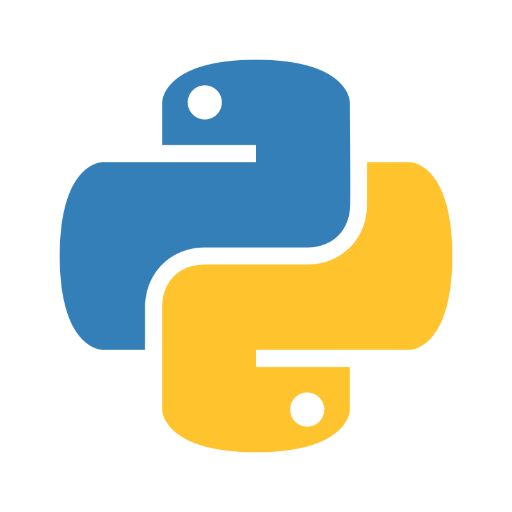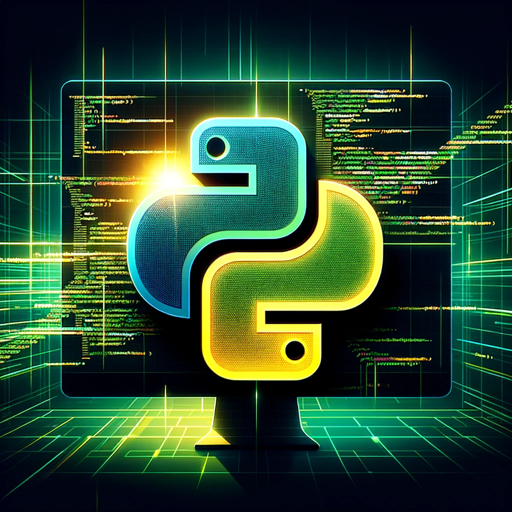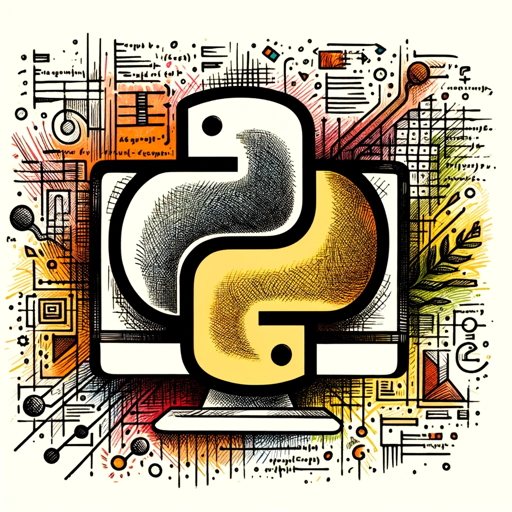Python GPT-AI Python expert assistance
AI-powered Python guidance for all.
Explain Python web scraping.
How does Python handle data analysis?
Create a simple Python game.
Teach me Python classes and objects.
Related Tools
Load More
Python GPT by Whitebox
Python made easy. Maintained by Whitebox at https://github.com/Decron/Whitebox-Code-GPT

GPT Idea Evaluator
Pitch me your GPT idea, and I'll rate it out of 10.

Python GPT
Your Python Coding Assistant

Idea To Code GPT
Generates a full & complete Python codebase, after clarifying questions, by following a structured section pattern.

GPT Finder - GPTD
I find custom GPTs on GPTDirectory.cc based on your search query.

Python GPT
Professional technical Python code expert. tries until succeeds. auto full best code.
20.0 / 5 (200 votes)
Introduction to Python GPT
Python GPT is a customized large language model specifically designed to provide expert-level assistance in Python programming. Leveraging the capabilities of the GPT-4 architecture, Python GPT offers a wide array of functionalities ranging from basic syntax explanations to complex programming concepts. It is tailored to make Python accessible and engaging for users of all levels, ensuring clarity in its explanations. Python GPT excels in offering detailed insights and thorough explanations, making it a valuable tool for learning, problem-solving, and developing Python-based projects. For instance, if a user is trying to understand how to write a for loop in Python, Python GPT can provide a clear explanation along with an example: ```python for i in range(5): print(i) ``` In this example, Python GPT would explain that this code prints the numbers 0 through 4, iterating over a sequence of numbers generated by the `range` function. It would further elaborate on how loops work and where they are commonly used, providing a solid understanding of the concept.

Main Functions of Python GPT
Syntax and Concept Clarification
Example
Explaining list comprehensions in Python.
Scenario
A user is confused about how to create a new list by applying an expression to each item in an existing list. Python GPT can provide a detailed explanation: ```python squares = [x**2 for x in range(10)] ``` This example shows how to create a list of squares of numbers from 0 to 9 using list comprehensions. Python GPT would explain the syntax and the underlying concept of list comprehensions.
Debugging Assistance
Example
Identifying the cause of a 'TypeError' in a function.
Scenario
A user encounters a 'TypeError' while running their code. Python GPT can analyze the code and help pinpoint the issue, such as passing an incorrect data type to a function. It might suggest checking the function's parameters and ensuring the correct data types are used: ```python def add_numbers(a, b): return a + b result = add_numbers(5, '3') # Causes TypeError ``` Python GPT would explain that the error occurs because a string is being added to an integer, which is not allowed in Python.
Project Guidance
Example
Providing a roadmap for developing a web application using Django.
Scenario
A user wants to build a web application but doesn't know where to start. Python GPT can outline the steps, recommend resources, and provide code snippets for setting up a Django project, creating models, views, and templates, and deploying the application. It might suggest starting with installing Django, setting up a project, and creating an initial app: ```bash pip install django django-admin startproject mysite cd mysite django-admin startapp myapp ``` Python GPT would then guide the user through the development process, including database migrations, URL routing, and template rendering.
Ideal Users of Python GPT
Students and Educators
Python GPT is an excellent resource for students learning Python and educators teaching the language. It provides clear, detailed explanations of concepts, examples to illustrate points, and answers to questions that help reinforce learning. Educators can use Python GPT to supplement their teaching materials and offer additional support to their students.
Developers and Hobbyists
Both novice and experienced developers can benefit from Python GPT. Novices can use it to learn Python from scratch, while experienced developers can use it to get help with specific problems, debug code, and learn advanced concepts. Hobbyists working on personal projects can find guidance on best practices, new libraries, and frameworks.

How to Use Python GPT
1
Visit aichatonline.org for a free trial without login, also no need for ChatGPT Plus.
2
Ensure you have a stable internet connection for seamless interaction with Python GPT.
3
Familiarize yourself with basic Python concepts to make the most out of Python GPT's capabilities.
4
Use the tool for a variety of tasks such as coding help, debugging, learning new Python libraries, or exploring advanced topics.
5
Take advantage of the detailed explanations and step-by-step guidance provided by Python GPT for your specific Python-related queries.
Try other advanced and practical GPTs
Public Relations AI
AI-driven strategies for modern PR.

PR Writer and Visual Advisor
AI-driven tool for impactful press releases

Ellie PA
AI-Powered Assistant for Your Tasks

Character Creator: Personality and Traits
AI-powered character personality creation tool
Spanish Chatroom with Sophie and Sylvie Together
AI-powered Spanish learning with live feedback.

RecOps
AI-powered tool for efficient hiring operations.

英語の先生
AI-powered English to Japanese Translation and Learning
Carrier Pigeon
AI-powered messaging for detailed answers

PyxGPT
AI-powered Python Programming Assistant
F# Expert
AI-powered F# programming assistant.

Python Pro
AI-powered assistance for smarter Python coding

Python Code
AI-powered Python coding and debugging

- Debugging
- Learning
- Web Development
- Coding Help
- Data Science
Python GPT Q&A
What can Python GPT help me with?
Python GPT can assist with a wide range of Python-related tasks including debugging code, learning new Python concepts, getting help with homework, and exploring advanced topics like data science or web development.
Do I need prior Python knowledge to use Python GPT?
No, Python GPT is designed to be accessible for users with varying levels of Python knowledge, from beginners to advanced programmers.
How does Python GPT handle complex Python topics?
Python GPT breaks down complex topics into manageable explanations and provides step-by-step guidance, making it easier to understand advanced Python concepts.
Can Python GPT assist with learning new Python libraries?
Yes, Python GPT can provide detailed explanations, examples, and best practices for using various Python libraries such as NumPy, pandas, Flask, and more.
Is Python GPT suitable for academic purposes?
Absolutely, Python GPT can help with academic projects, assignments, and research by providing clear explanations and assisting with code development and debugging.